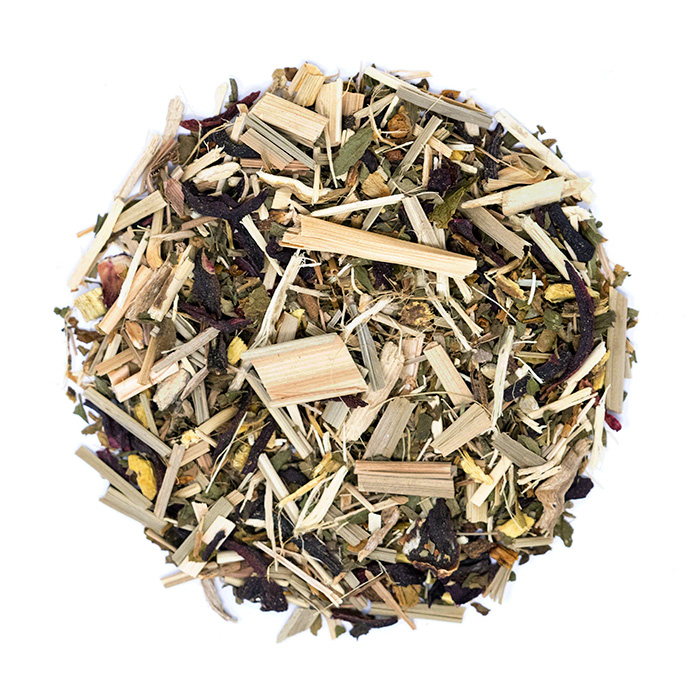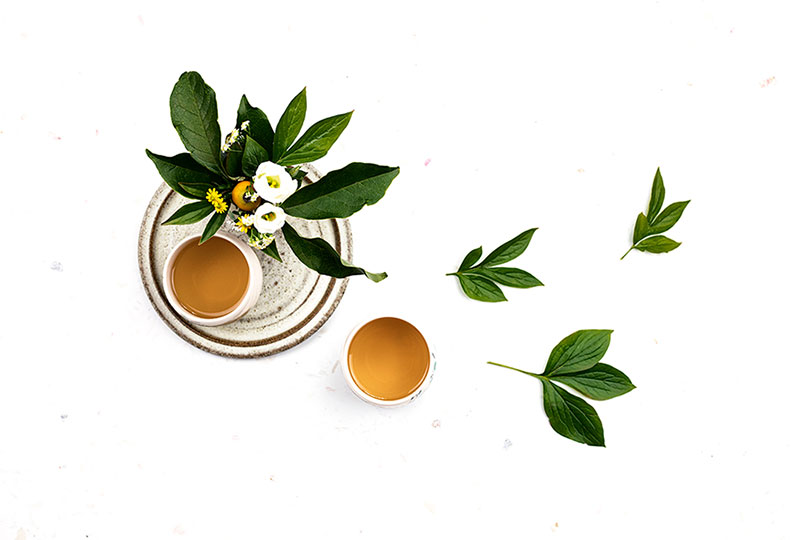Ginseng Tea Guide
Ginseng is one of the oldest and the most potent roots in the world that’s been used as a herbal remedy for at least 5000 years. What makes ginseng so special and why should you try it too?
What is ginseng tea?
Ginseng tea is a herbal caffeine free tea made from ginseng root. It’s highly popular because of the amazing benefits it could provide. There are different types of ginseng, but the most popular ones are the American ginseng or Panax quinquefolius a Korean or Panax ginseng. Korean ginseng, often simply called just Asian ginseng, is most commonly used type for making tea. Other types of ginseng important for their medicinal properties are Vietnamese, Japanese and Himalayan ginseng[1].
Furthermore, Korean ginseng can be processed differently, which results in aneither white or red ginseng. White ginseng is a sun dried fresh ginseng root, while the red ginseng is firstly steamed, then dried. This process may change the chemical composition and influence some benefits. For comparison, think of green and black tea – they are both made from the same plant, but processed differently.
Ginseng root tea is one of the most popular herbal teas in many Asian countries. It’s used for promoting overall health and vitality and very often drank pure. Interestingly, the first person responsible for discovering the benefits of ginseng was the Emperor Shen Nong[2], the father of Chinese Traditional Medicine. He also discovered real tea.
The third interesting type of ginseng is called Siberian ginseng or Eleutherococcus senticosus, often called Eleuthero root. Although it’s from the same botanical family as the other two plants, it belongs to another botanica genus. Siberian ginseng contains different active compounds than ginseng roots from Panax genus[3]. However, this plant too, just like the other two, is considered adaptogenic.
Does ginseng tea have caffeine?
Ginseng tea is a herbal tea that contains zero caffeine. However, ginseng tea may help reduce fatigue even though it contains no caffeine. Studies showed that ginseng may help improve both mental and physical performance[4], which makes it a great substitute for regular caffeinated drinks.
If you were searching for ginseng tea online, you may have stumbled upon a unique type – Ginseng Oolong or Ren Shen Oolong. This tea comes from Taiwan or Mainland China and is made with ball-shaped oolong tea leaves coated in ginseng and licorice powder. Ginseng Oolong tea leaves look like little dark green pellets. They brew into a delicious, slightly sweet, slightly earthy and refreshing drink. This tea contains caffeine as it’s made with Camellia sinensis tea plant. The amount of caffeine will depend on the type of tea and the way you brew it.
How to Make Ginseng Tea
Ginseng tea is widely available in tea bags, sometimes as loose tea, and it’s included in many herbal blends. Ginseng supplements are available too. It’s highly popular in South Korea and most of ginseng tea available online is produced in this country. You can make ginseng tea from both fresh and dry ginseng, although the fresh one may not often be available, depending on where you live.
To make a cup of ginseng tea, bring fresh spring water to a boil and let it cool down for 30-60 seconds. Don’t use boiling water. Use about 1-2 teaspoons of ginseng root per cup of water. Steep the root for about 5 minutes. Strain and add sweetener.
Ginseng blends well with licorice, ginger, lemon, honey and real teas – especially oolong and green tea.
What does ginseng tea taste like?
Ginseng may not be everyone’s cup of tea, but many herbal tea drinkers find it very energizing and tasty. It has a specific taste and can be bitter. Expect earthy warming notes. To enhance the flavor, add in some honey or lemon or ginger. If you are not fond of the ginseng tea flavor, try ginseng blends such as – After Noon Delight or Seven.

After Noon Delight herbal tea with ginseng root, peppermint, licorice, hibiscus, passion fruit, lemongrass and St. John’s wort
Health benefits of ginseng tea
Ginseng belongs to a group of adaptogenic plants, so it may offer numerous benefits for mental and physical health. Adaptogens are often described as plants that may help naturally reduce all types of stress. The most researched and beneficial active compounds in ginseng are ginsenosides. They are found in ginseng root, flowers and fruits[5].
In traditional herbal medicines, ginseng was mostly used for boosting vitality, prolonging life, treating diabetes, fatigue, depression, inflammation, nausea, stress, vomiting and degenerative diseases[6]. Ginseng is generally considered safe, but some side effects such as allergic reaction or toxicities are still possible[7].
Some health benefits of ginseng tea are:
1. Help improve cognitive function
Studies showed that one of the most important benefits of ginseng may be the ability to increase intellectual work capacity[8] and cognitive function[9]. Another study showed it may help improve attention and may even help with ADHD in children[10].
2. Improving physical performance
Ginseng may not only help with mental performance but could significantly increase physical performance too[11]. Studies showed it may help with aerobic endurance and reduce chronic fatigue.[12]
3. Anti-inflammatory activities and booting immunity
Studies showed that ginsenosides in ginseng may help fight inflammation[13] and increase the resistance to illness,[14] thus helping enhance immune system.
4. Effect on blood pressure
Ginseng may be beneficial for preventing heart diseases. Studies showed that Korean red ginseng may help regulate high blood pressure[15] and improve blood circulation[16].
5. Effects on blood sugar
Studies showed that American ginseng root may help regulate blood sugar levels and help treat hyperglycemia in patients with Type 2 diabetes[17].
Disclaimer: This article is for informational purposes only. It’s not intended to replace medical advice, diagnosis or treatment. Every person is different and may react to different herbs and teas differently. Never use teas or herbs to treat serious medical conditions on your own. Always seek professional medical advice before choosing home remedies.
References:
[1] https://www.ncbi.nlm.nih.gov/pmc/articles/PMC5628327/
[2] https://www.ncbi.nlm.nih.gov/pmc/articles/PMC5628327/
[3] Jie Ma; Chemical Profile of Ginseng, Epimedium, Rhodiola and Siberian Ginseng Extracts and Stability of their Formulated Products; 2013
[4] https://www.ncbi.nlm.nih.gov/pmc/articles/PMC3659633/
[5] https://www.ncbi.nlm.nih.gov/pmc/articles/PMC3659633/
[6] https://www.ncbi.nlm.nih.gov/pmc/articles/PMC5628327/
[7] https://www.ncbi.nlm.nih.gov/pmc/articles/PMC4452531/
[8] https://www.ncbi.nlm.nih.gov/pmc/articles/PMC3659633/
[9] https://www.ncbi.nlm.nih.gov/pmc/articles/PMC3659585/
[10] https://www.ncbi.nlm.nih.gov/pmc/articles/PMC3659525/
[11] https://www.ncbi.nlm.nih.gov/pmc/articles/PMC3659633/
[12] https://www.ncbi.nlm.nih.gov/pmc/articles/PMC3629193/
[13] https://www.ncbi.nlm.nih.gov/pmc/articles/PMC5628327/
[14] https://www.ncbi.nlm.nih.gov/pmc/articles/PMC3659612/
[15] https://www.nature.com/articles/hr20167





